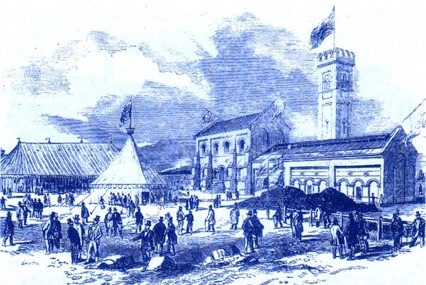In the bustling city of London, there is a hidden network of waterways that often goes unnoticed amidst the modern infrastructure. These ancient aqueducts, built centuries ago, served as vital conduits for transporting water throughout the city. Despite their historical significance, they have been largely forgotten. In this article, we will delve into the fascinating world of London’s hidden water highways, exploring their history, architecture, and the role they played in shaping the city. Join us on this journey as we unravel the secrets of these forgotten aqueducts.
The Origins of London’s Aqueducts
London’s aqueducts can be traced back to the Roman era, when the city was known as Londinium. The Romans, renowned for their engineering prowess, recognized the importance of a reliable water supply for the growing city. They constructed an intricate network of aqueducts to bring water from sources outside the city, ensuring a steady flow for its inhabitants.
Roman Aqueducts: Engineering Marvels
The Roman aqueducts in London were engineering marvels of their time. These structures were designed to channel water from natural sources such as rivers or springs, using a combination of gravity and sophisticated engineering techniques. The aqueducts consisted of a series of arches, which supported a channel carrying the flowing water. The use of arches allowed the aqueducts to span across valleys and uneven terrain, ensuring a continuous supply of water to the city.
The Decline of Roman Aqueducts
With the decline of the Roman Empire, the aqueducts in London fell into disrepair. The knowledge and expertise required to maintain and repair these complex structures were lost over time. As a result, the once bustling water highways gradually faded into obscurity, overshadowed by newer methods of water transportation.
Medieval Revival: The Great Conduit
During the medieval period, London witnessed a revival of its aqueduct system. One notable example is the Great Conduit, built in the 13th century. This impressive structure brought water from Tyburn, a tributary of the River Thames, to the heart of the city. The Great Conduit consisted of a series of lead pipes, which transported the water over a distance of several miles. It provided a reliable water supply to the growing population, contributing to the city’s development.
The Victorian Era: Rediscovering the Aqueducts
In the 19th century, as London expanded rapidly, the need for a modern and efficient water supply became paramount. The aqueducts, which had long been forgotten, were rediscovered and incorporated into the city’s water infrastructure. The construction of new aqueducts, such as the New River, brought water from distant sources to meet the growing demand.
Modern Challenges and Preservation Efforts
Today, London’s aqueducts face numerous challenges. Urban development, pollution, and neglect have taken their toll on these historic structures. However, there is a renewed interest in preserving and celebrating the city’s aqueduct heritage. Organizations such as the London Waterways Commission are working tirelessly to raise awareness and protect these hidden water highways.
Conclusion
London’s forgotten aqueducts are more than just relics of the past; they are a testament to the ingenuity and engineering prowess of those who came before us. As we trace the pathways of these hidden water highways, we gain a deeper understanding of London’s rich history and the vital role water has played in shaping the city. Let us not forget the aqueducts that have quietly stood the test of time, and may their legacy continue to inspire future generations.
